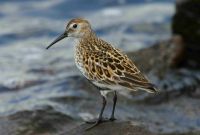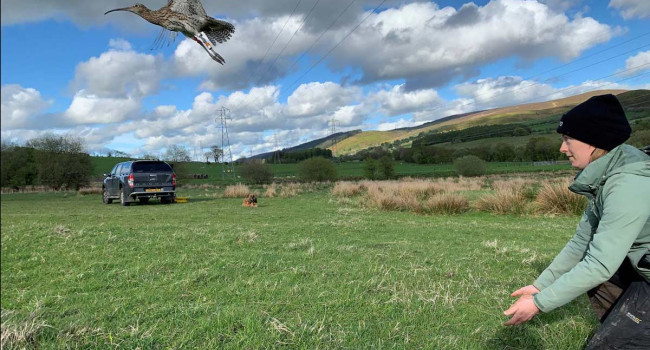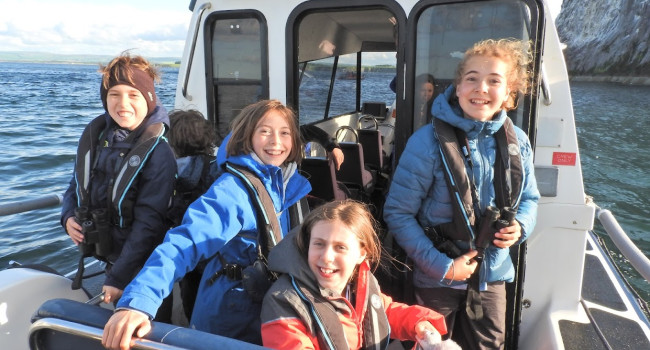Wales internationally important for wintering waterbirds
01 Oct 2012 | No. 2012-32
Latest counts collected by Wetland Bird Survey (WeBS) volunteers reaffirm the importance of the Severn Estuary and other sites for wintering waterbirds in Wales.
far afield as Iceland and Siberia
An amazing 75,000 geese, ducks and waders used the Severn Estuary during the freezing winter of 2010/11, eight species of which now use the estuary in internationally important numbers. Many of these birds come from breeding areas as far afield as Iceland and Siberia, including Dunlin (24,350*) and Ringed Plover (1,080) whose wintering populations across the UK as a whole are at all-time lows, according to the latest WeBS report – Waterbirds in the UK.
Counts on the Severn Estuary in 2010/11 were, for many species, higher than recent averages, presumably in response to the cold weather. Although it was cold in western Britain, birds from even colder areas further east in Europe, are likely to have made use of west coast estuaries as cold weather refuges. Along with Dunlin and Ringed Plover, the six other species to use the Severn Estuary in internationally important numbers (more than 1% of the total international population) are Mute Swan (400), Bewick’s Swan (250), Shelduck (4,230), Pintail (730), Shoveler (570), and Redshank (2,920).
The Severn is one of many internationally important wetlands in Wales – others supporting internationally important numbers of waterbirds include the Burry Inlet, Carmarthen Bay, Cleddau Estuary and Dee Estuary (the latter straddling the border with England).
*all numbers are an average of annual peaks over the last five years
Chas Holt, WeBS Organiser at the British Trust for Ornithology, said: “We are indebted to over 200 WeBS volunteers who braved the winter of 2010/11 to monitor Wales’s important waterbird populations. This fantastic effort is fundamental in helping to illustrate the population trends of wintering waterbirds and how these birds respond to cold weather.”
Simon Wotton, Senior Conservation Scientist at RSPB said: “The results of the 2010/11 winter show how important protected areas are for the wintering waterbirds. The increased use of sites during this cold winter, including areas managed by conservation bodies such as RSPB, show how valuable well managed wetlands can be to birds who need a safe place to gowhen the continent freezes over. The latest figures highlight the importance of this long-running survey and the importance of volunteer surveyors.”
Matty Murphy, Ornithologist at Countryside Council for Wales, said: "WeBS data are an invaluable resource for Wales, showing the importance of estuaries at a Welsh, UK and international level. WeBS data remind us that we should not just focus on sites within Wales, but also in terms of the greater flyway of these species across Europe. This increase of Dunlin numbers in recent cold winters in the Severn Estuary for instance, has shown how within Europe and the UK we need a wide and varied network of sites to accommodate cold weather movements of birds – of which Welsh sites are an integral part."
Richard Hearn, Head of Monitoring at Wildfowl & Wetlands Trust, said: “The vital role the Severn Estuary plays in safeguarding migratory waterbirds is widely recognised through its classification as an EU Special Protection Area and Wetland of International Importance under the Ramsar Convention. This has been further emphasised by the latest counts of waterbirds there which, along with other features such as its Atlantic salt pasture and tidal bore, demonstrate the global uniqueness of this wetland and the need to ensure it receives the greatest level of protection.”
Note for Editors
- The BTO is the UK's leading bird research organisation. Over thirty thousand birdwatchers contribute to the BTO's surveys. They collect information that forms the basis of conservation action in the UK. The BTO maintains a staff of 100 at its offices in Norfolk, Stirling and Bangor, who analyse and publicise the results of project work. The BTO's investigations are funded by government, industry and conservation organisations.
- The Wetland Bird Survey (WeBS) is the monitoring scheme for non-breeding waterbirds in the UK, which aims to provide the principal data for the conservation of their populations and wetland habitats. WeBS is a partnership between the British Trust for Ornithology, the Royal Society for the Protection of Birds and the Joint Nature Conservation Committee (the latter on behalf of the Council for Nature Conservation and the Countryside, the Countryside Council for Wales, Natural England and Scottish Natural Heritage) in association with the Wildfowl and Wetlands Trust..
- To view the report please visit http://www.bto.org/volunteer-surveys/webs/publications/wituk-201011
Contact Details
Chas Holt
(BTO WeBS Organiser)
Office: 01842 750050
(9am to 5.30pm)
Email: webs [at] bto.org
Paul Stancliffe
(BTO Media Manager)
Office: 01842 750050
(9am to 5.30pm)
Mobile: 07585 440910 (anytime)
Email: press [at] bto.org
Images are available for use alongside this News Release
Please contact images [at] bto.org quoting reference 2012-32
The BTO has an ISDN line available for radio interviews
Please contact us to book an interview
Office: 01842 750050







Share this page